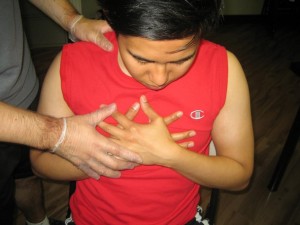A stingray sting is caused by a flat-bodied cartilaginous fish that has one or more barbed stingers found midway on the tail. Generally, they are normally found in coastal tropical and subtropical marine waters. The stingray uses their stinger in self-defense when they are accidentally stepped on and secrete venom into the wound of the victim. In addition, if a person is stung in the chest or abdomen, it can damage the internal organs, trigger an allergic reaction, severe loss of blood and secondary infections.
Symptoms of a stingray sting
- At first, bleeding
- Pain
- Swelling
- Weakness
Severe symptoms of an allergic reaction include swollen lips or tongue, shortness of breath, itchy rash, fainting, loss of consciousness, dizziness, sweating, decreased and elevated heart rate and rapid breathing. - Muscle cramps
- Headache
- Palpitations
- Nausea and vomiting
- Breathing difficulties
- Fainting
- In addition, dizziness and lightheadedness
- Lastly, severe symptoms of an allergic reaction include swollen lips or tongue, shortness of breath, itchy rash, fainting, loss of consciousness, dizziness, sweating, decreased and elevated heart rate and rapid breathing. In such cases, it is vital to seek immediate medical care.
Treatment
- While still in the water, irrigate the wound using sea water to remove all debris and foreign bodies found in the affected area. Generally, use tweezers if available. After cleaning, get away from the water and dry the area using a clean towel. Avoid removing any penetrating debris from the neck, chest or abdomen.
- If there is bleeding, apply direct pressure at the area or slightly above the area using one finger at least for a few minutes until bleeding lessens.
- Soak the sting site in hot water to lessen the pain by denaturing the venom. Generally, the temperature of the water should be at least 45 degrees C. Soak the wound for 30-90 minutes or until the pain totally disappears.
- Keep the wound clean all the time by washing it with soap and water.
- Apply the prescribed antibiotic ointment on the affected area every day and do not cover with any dressing.
- If the affected area becomes tender, red, itchy, sore and starts to swell or ooze a cloudy discharge, seek medical help immediately.
Tips
- When swimming in tropical waters, watch out for sharks, stingrays and other dangerous sea creatures.
- Remove as much venom from the wound without injuring the body
- When walking in water, drag or shuffle the feet to warm sea creatures of your approach.
- Use hot sand as a medium in cleaning the wound, if hot water is not available. Be sure to clean the wound carefully after.
Disclaimer / More Information
The material posted on this page on a stingray sting is for learning purposes only. Learn to provide proper wound care for a stingray sting by taking a first aid and CPR class with one of our training providers.
FACT CHECK
https://www.webmd.com/first-aid/stingray-injury-treatment
https://www.healthline.com/health/stingray-sting
https://www.emedicinehealth.com/wilderness_stingray_sting/article_em.htm


